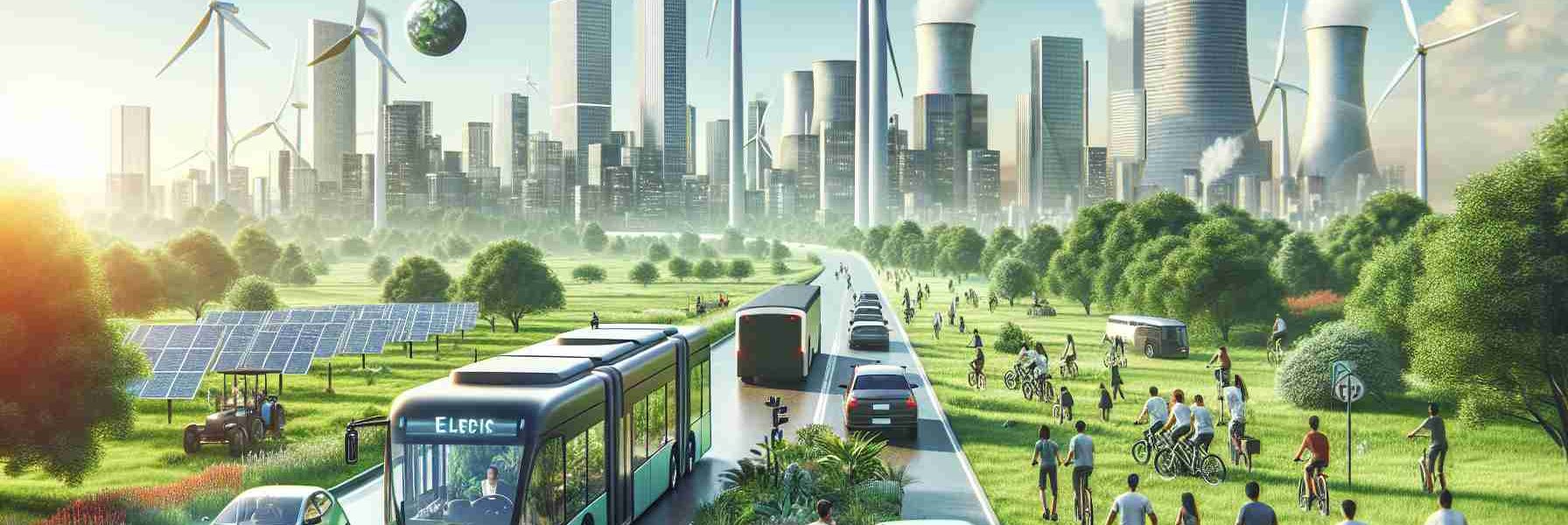In a world increasingly focused on sustainability, eco-friendly transportation options are gaining popularity. Commuters are shifting away from traditional vehicles powered by fossil fuels and embracing alternative modes of transportation that are kinder to the environment. Among these options are electric bikes, scooters, and public transportation systems. As concerns about climate change and air pollution grow, more individuals are seeking ways to reduce their carbon footprint in their daily travels.
Electric bikes have emerged as a particularly attractive choice for those looking to commute efficiently while minimizing their impact on the planet. With advancements in battery technology and motor efficiency, electric bikes offer a convenient and eco-friendly way to navigate urban environments. Many cities have also been investing in infrastructure to support cycling and encourage more people to choose biking as a mode of transport.
Scooters have also gained traction in urban areas as a convenient and sustainable way to get around. Companies offering electric scooter rentals have proliferated in many cities, providing residents and visitors with a fun and accessible way to travel short distances without relying on cars. These scooters not only reduce emissions but also help alleviate traffic congestion in busy metropolitan areas.
Overall, the shift towards eco-friendly transportation signals a positive change towards more sustainable and environmentally conscious commuting habits. By embracing these alternatives, individuals can contribute to a greener future while enjoying the benefits of convenient and cost-effective modes of transportation.
The Rise of Eco-Friendly Transportation: Exploring Further Innovations and Challenges
In the realm of eco-friendly transportation, there are several intriguing developments and considerations that shape the landscape beyond electric bikes, scooters, and public transportation systems. While these options have gained traction, there are additional facets to explore for a comprehensive understanding of sustainable mobility.
What are some lesser-known eco-friendly transportation solutions?
In addition to electric bikes and scooters, hydrogen-powered vehicles are emerging as a viable alternative in the quest for environmentally friendly transportation. Hydrogen fuel cell technology offers zero-emission capabilities, making it a promising option for reducing greenhouse gas emissions in the transportation sector.
What role does urban planning play in promoting eco-friendly transportation?
Urban planning plays a crucial role in fostering sustainable transportation practices. Designing bike lanes, pedestrian-friendly spaces, and efficient public transit systems are integral components of creating a transportation ecosystem that reduces reliance on fossil fuel-powered vehicles.
What are the key challenges associated with the widespread adoption of eco-friendly transportation?
One of the primary challenges is infrastructure development. Building charging stations for electric vehicles, creating safe biking pathways, and integrating sustainable transportation into existing urban networks require significant investment and coordination. Additionally, addressing range anxiety for electric vehicles and ensuring convenient access to alternative modes of transport remain ongoing challenges.
Advantages and Disadvantages of Eco-Friendly Transportation:
Advantages:
1. Reduced carbon footprint: Eco-friendly transportation options contribute to lowering greenhouse gas emissions and combating climate change.
2. Health benefits: Choosing alternative modes of transport like biking or walking can improve physical fitness and overall well-being.
3. Cost savings: Over time, eco-friendly transportation can lead to financial savings on fuel and maintenance expenses compared to traditional vehicles.
4. Cleaner air quality: By decreasing reliance on combustion engines, eco-friendly transportation helps mitigate air pollution in urban areas.
Disadvantages:
1. Initial cost: Some eco-friendly vehicles and infrastructure may have higher upfront costs, deterring potential users.
2. Limited range: Electric vehicles and bikes may have range limitations, necessitating careful planning for longer journeys.
3. Charging infrastructure: Access to charging stations for electric vehicles can be sparse in certain regions, posing a challenge for users.
4. Safety concerns: Cyclists and scooter riders sharing the road with traditional vehicles face safety risks, highlighting the need for improved awareness and infrastructure.
By delving into these additional dimensions of eco-friendly transportation, we gain a more nuanced perspective on the complexities and opportunities within the realm of sustainable mobility.
For further exploration on eco-friendly transportation initiatives and innovations, visit Transport & Environment.




